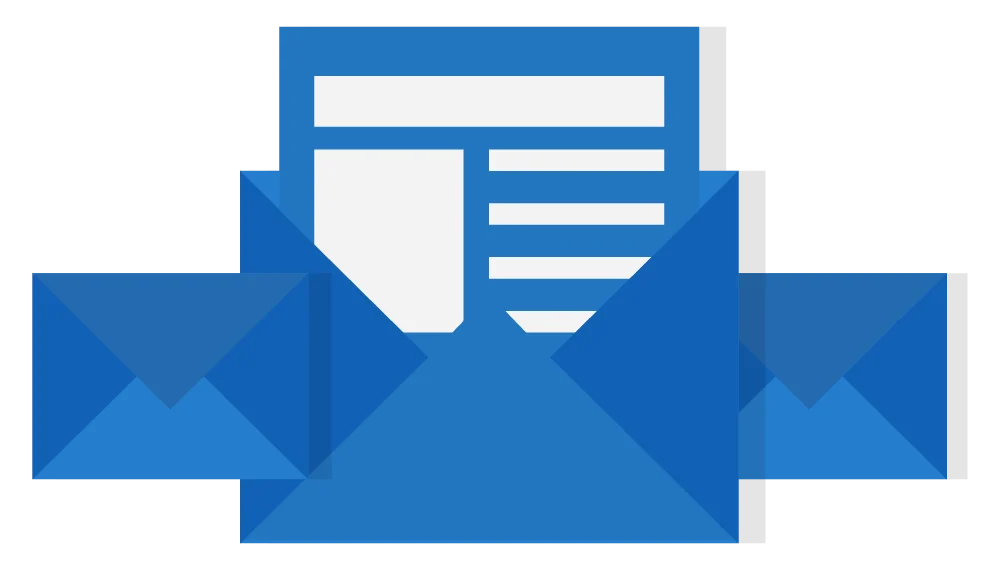Last updated on September 30th, 2025 at 04:35 pm
In today’s competitive digital landscape, email marketing remains one of the most powerful tools for connecting with your audience, driving conversions, and building lasting relationships.
But managing multiple platforms, optimizing performance, and maintaining a streamlined process can quickly become overwhelming.
That’s why I created the Email Marketing Toolkit, a Notion-based solution designed to complement your email service providers.
This toolkit helps you manage everything in one place campaigns, sales funnels, email lists, and A/B testing.
So you can focus on crafting high-quality content and boosting your email marketing performance.
Whether you’re a seasoned marketer or just starting out, this toolkit offers the clarity and control you need to take your email strategy to the next level.
Why This Template?
While building my business, I experimented with various email marketing platforms. Each offered unique features, but one thing they all lacked was a dedicated space to gather and manage content ideas.
I found myself taking notes and planning email content in separate tools, then transferring it piece by piece to my email platform.
With email marketing toolkit – Notion template, this process becomes so much simpler, as it provides an all-in-one workspace to brainstorm, organize, and finalize email content.
Customizable Analysis
Most email platforms provide basic analytics, but it’s tough to compare performance across multiple campaigns or dive deep into the metrics that truly matter.
Whether it’s open rates, click-through rates, or conversions, it’s not easy to get a clear picture of what’s working.
This template allows you to analyze and compare your emails on your terms, giving you the power to pinpoint your strengths and weaknesses.
Building and Managing Sales Funnels
As someone passionate about sales and digital marketing, I know how crucial sales funnels are for driving the right customers to your products.
While platforms like ConvertKit or another email services provider offer limited access to funnel-building tools, they often lack flexibility. You can’t see or manage all the emails within a funnel in one comprehensive view.
This template solves that by letting you organize and track every email under your sales funnels, so you can manage them efficiently and improve conversions.
Effortless Newsletter Management
Managing newsletter content used to feel overwhelming. Organizing topics, ensuring consistency, and keeping track of what content was scheduled became a challenge.
Now, with this toolkit, all my newsletters are structured and organized in one place. From drafting content to scheduling, everything is easily managed, giving me peace of mind.
All Your Emails in One Place
I won’t lie—like many others, I use different platforms to send emails, from Gumroad for my Notion templates to ConvertKit or another email services provider for promotional campaigns. Managing emails from multiple platforms was chaotic.
This template brings them all together in one workspace, letting you track, compare, and optimize emails from different services. No more jumping between platforms—just seamless management.
Clear Vision for Campaigns and Sales Funnels
Creating and optimizing sales funnels can be exhausting, especially when you need multiple views to track and manage them effectively.
With tools like ConvertKit or another email services provider, the options are limited. This template offers a variety of views to manage emails, sales funnels, and campaigns with clarity.
You can also run A/B tests beyond just subject lines—testing CTA buttons, images, or even colors something many email platforms don’t support.
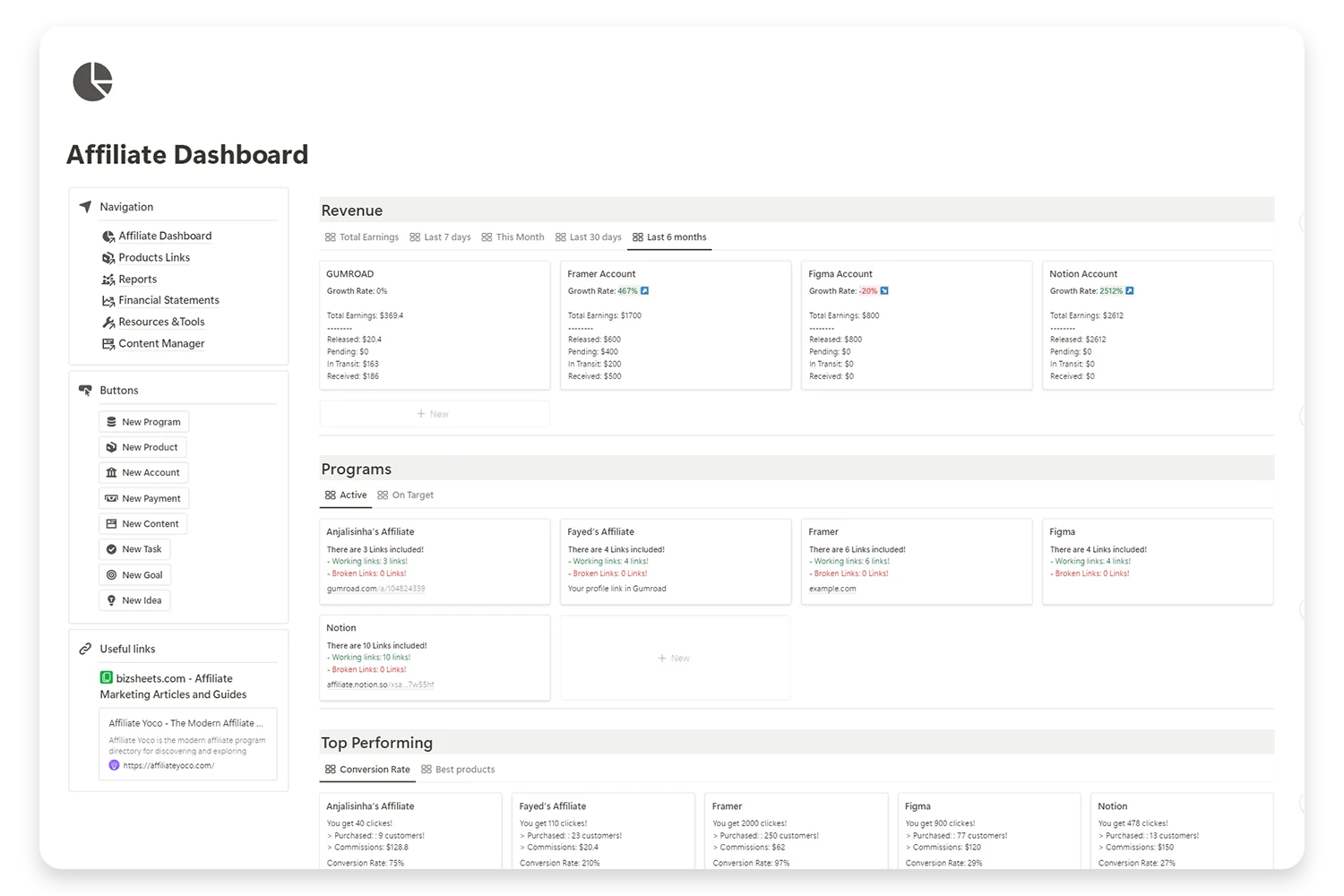
Elevate Your Affiliate Business with Expert Insight Management
Take control of your affiliate marketing with our comprehensive Notion template. Designed for efficiency and clarity, this template helps you manage your affiliate programs, track earnings, and optimize your strategies.
How It Works
This template serves as the planner, manager, and organizer for all your email-related processes whether it’s drafting emails, managing campaigns, building sales funnels, or tracking performance.
It provides a structured environment to create, organize, and analyze your email content, all in one place.
However, this is not a replacement for your email service provider. Instead, it’s an addition to optimize your workflow.
Once you’ve crafted and organized your email content here, you’ll move your final, ready-to-send emails to your email platform—whether that’s ConvertKit, Mailchimp, sender, or another email services provider.
Think of this template as your command center for email strategy and planning, while your email service provider handles the actual sending.
How to Set Up Your First Email
Let’s walk through creating your first email using the Email Marketing Toolkit.
Step 1: Create a New Email
Navigate to the Email List page. From there, click on “New Email” to start crafting a new email.
You can also use quick actions from any page to instantly create a new entry.
Once the new email page opens, you’ll see several properties divided into four key sections:
Section 1: Identify the Email
This section is where you give your email a name and set up its core identity.
You can specify the type (Drip Campaign or Standalone Email) and categorize it to fit into your email strategy.

Section 2: Key Email Details
Topic: Outline the core content or subject of the email.
Target Audience: Specify the customer list or segments you’re targeting with this email.
Subject Line: Write the headline of your email—the first thing your recipients will see.
Call-to-Action (CTA): Add the link or action you want the audience to take, like visiting a website, buying a product, or signing up.
Platform Link: Include the link to where the email will live on your email service platform (e.g., ConvertKit, Mailchimp, Sender or another email services provider).
Section 3: Performance Tracking
After sending the email, this section will track key performance metrics:
Emails Sent: Total number of emails successfully sent.
Delivered Emails: How many emails were actually delivered.
Open Rate: The percentage of recipients who opened your email.
Click-Through Rate (CTR): The number of recipients who clicked links in the email.
Leads and Conversions: Track the impact your email had in terms of leads generated or conversions made.

Section 4: Analysis & Insights
This section of Email marketing toolkit gives you a clear breakdown of performance metrics, making it easy to analyze what worked and what didn’t.
You can compare rates, like Open Rate vs. Click Rate, to understand audience engagement and improve future emails.
Body of the Page: Email Draft & Checklist
At the bottom of the page, you’ll find a checklist to guide you through finalizing your email. This is especially helpful if you’re new to email marketing.
It includes detailed prompts like verifying links, optimizing subject lines, and ensuring the email aligns with your overall strategy.
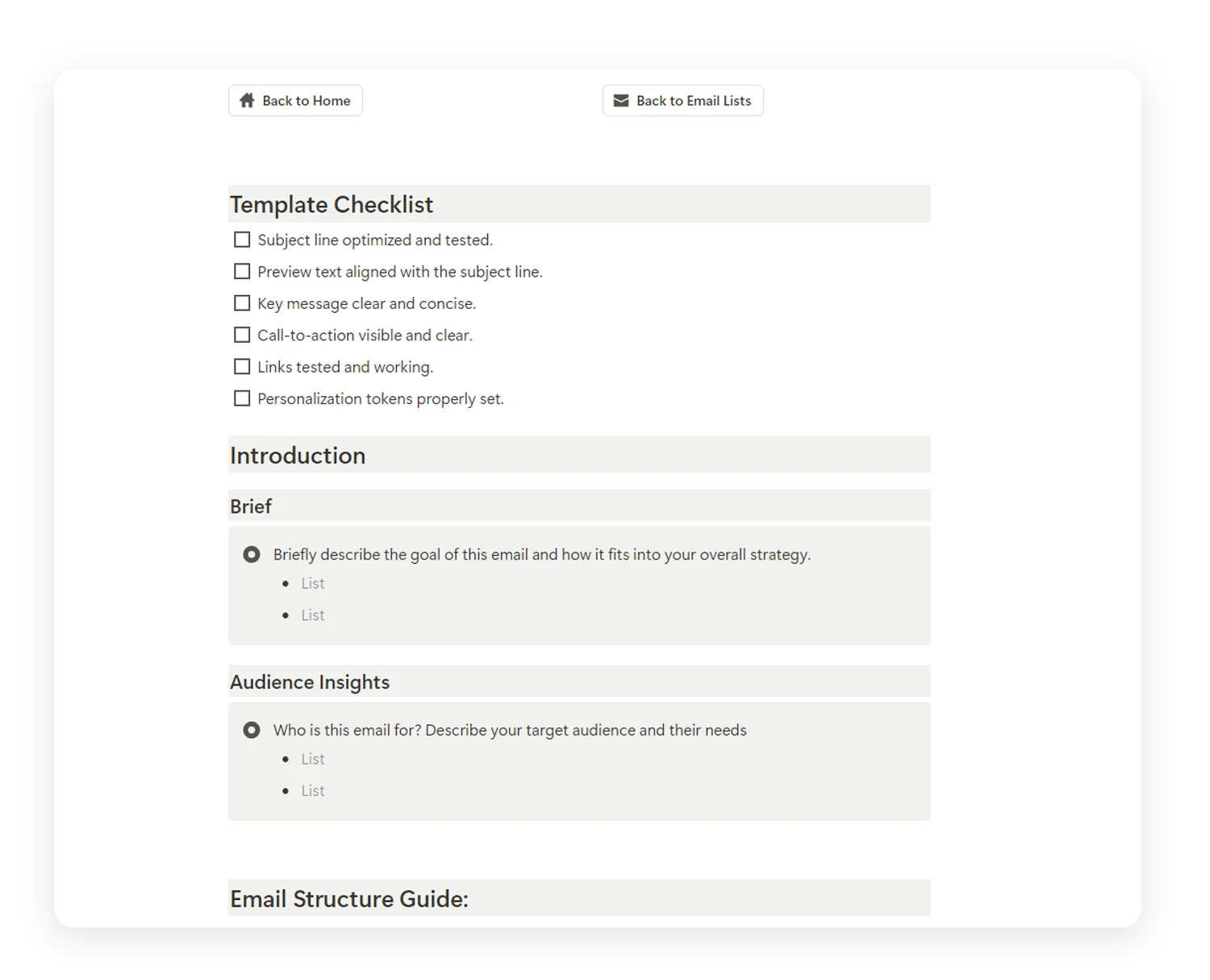
How to Create Sales Funnels
Creating sales funnels, campaigns, or workflows—like the ones you use in Gumroad—has never been easier with this Email marketing toolkit.
Start by filling in the necessary details for your funnel or campaign. First, define the main objective of the funnel, whether it’s increasing sales, building engagement, or promoting a product.
Then, organize the sequence of emails to be sent in alignment with the funnel’s structure. If you’ve already created emails, you can easily link them to the funnel.
As shown in the example image below, each stage of the funnel is clearly displayed alongside the corresponding emails.
You’ll also notice dynamic statuses that provide real-time feedback, helping you identify any missing elements or issues in the funnel.

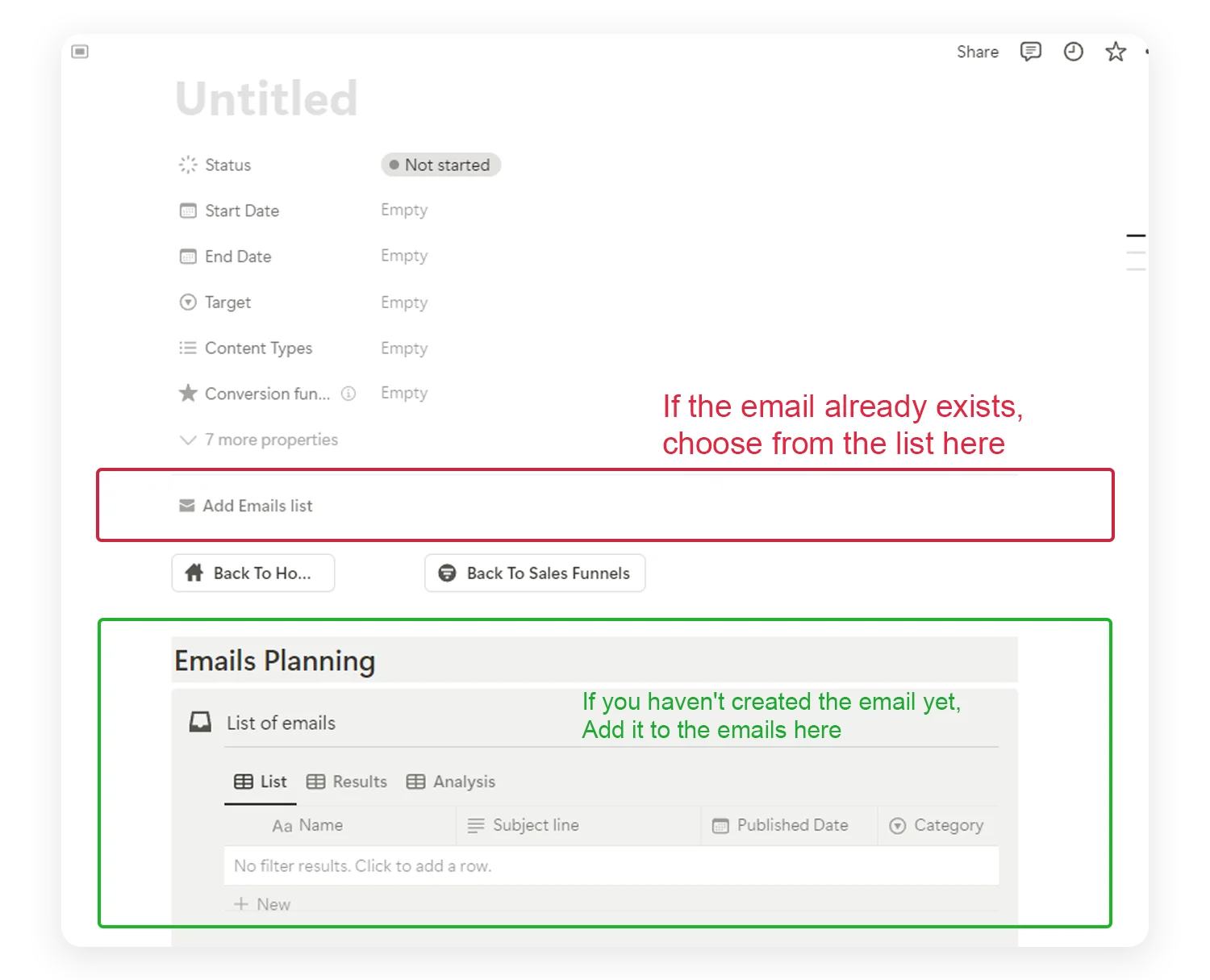
How to Set Up A/B Testing
As both a marketer and designer, I understand how essential A/B testing is for optimizing content and understanding what your audience truly responds to.
By testing different variations of your content, you can gather valuable insights based on your audience’s actions.
Whether it’s the color of a button, the CTA (Call-to-Action), or even the subject line—testing is critical for finding what works best.
In fact, even this article you’re reading might have been tested in different variations, such as the headline or the images.
In this Email marketing toolkit, we’ve integrated A/B testing to help you experiment with key email elements, such as color, CTA buttons, or subject lines. Here’s a step-by-step guide to setting up A/B testing:
Step-by-Step Guide to A/B Testing
Step 1: Name your page and the A/B test.
Step 2: In “Box 1,” fill in the test details based on the provided fields. This includes the test name, goal, and version information.

Example:
Let’s say you’re testing which button color gets more clicks in an email. Here’s how you can set up your A/B test:
Variation: Select what element you want to test. In this case, we’ll choose “Button.”
Add two variations for the email: Email A and Email B.
For Email A, use a button with a blue color.
For Email B, use a button with a red color.
This will allow you to see which color performs better based on audience engagement.
Step 3: Determine how many customers to include in the test.
Let’s say you’re testing on 1,000 customers.

Tip: You can adjust this to suit your needs, whether you’re testing on “leads,” “subscribers,” or another relevant audience segment.
Step 4: Specify the amount of traffic that will participate in the test. This helps you see how traffic volume impacts your results.
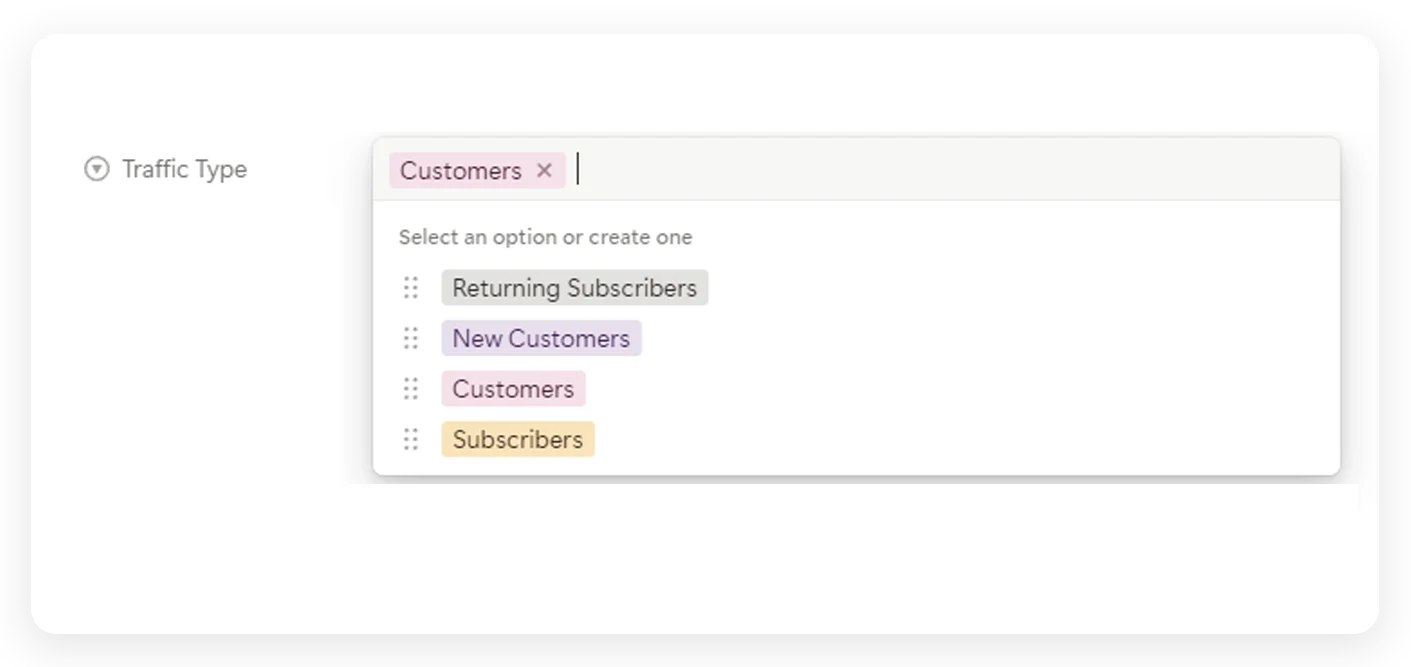
Step 5: Set your test criteria. Since we’re testing button clicks, the criteria would be based on the number of clicks each version receives.
For this example, let’s set the criteria at 500 clicks, which is 50% of the traffic.
Step 6: Move to “Box 2” and start recording the results. Here, you’ll document the performance of each version.

Example Results:
Results of A: 650 clicks
Results of B: 350 clicks
In this case, Version A would automatically be declared the winner based on the higher click rate.
Step 7: Finalize your test by confirming the winner. If you want to override the automatic selection, you can manually choose another version in the “Final Result” field.
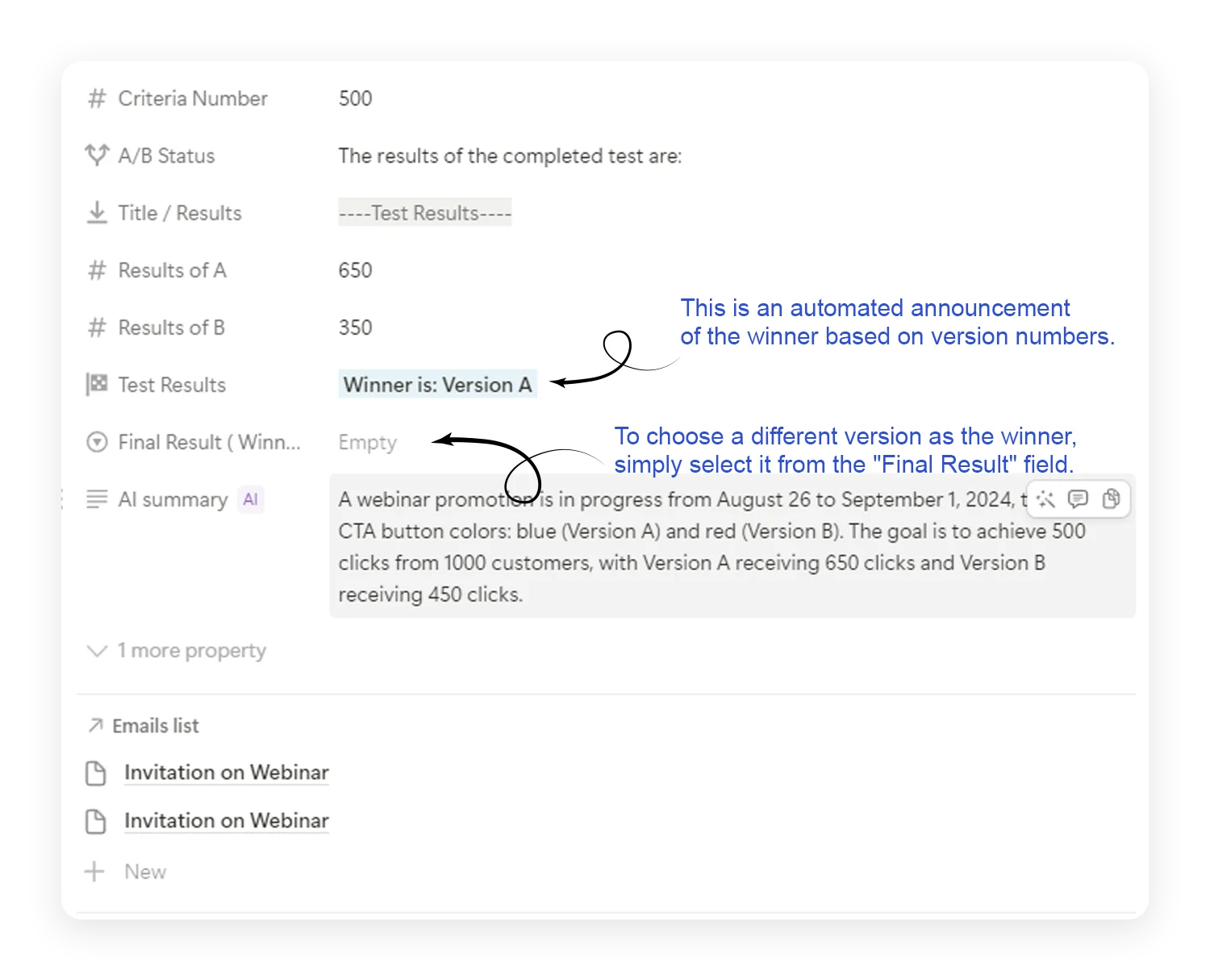
How to Add Emails for A/B Testing
There are two methods for adding emails to your A/B test:
If the Emails Already Exist: Select the emails from the “Existing Emails” section, where you can assign them to the test.
If You Haven’t Created the Emails Yet: You can create new emails by going to the “Email Planning” section and adding them to the test directly.
By following these steps, you’ll be able to set up and analyze A/B tests that will help optimize your email marketing efforts and drive better results.

Analysis and Performance
At the end of every email campaign, funnel, or A/B test, it’s essential to pause and review the results.
Without analyzing our actions and understanding our audience’s behavior, it becomes nearly impossible to improve and optimize for better outcomes.
This Email marketing toolkit provides a dedicated Performance Page where you can track the status, rates, and key performance indicators (KPIs) for all your emails.
Whether it’s a single email, a complete campaign, or an A/B test, you’ll have clear insights into what’s working and where improvements are needed.
I’ve learned through experience that every action, no matter how small, deserves attention. It’s like a droplet of water that, over time, can carve a hole in a stone
Consistent analysis helps you make informed decisions that lead to substantial results.
Take the time to review your performance metrics and make the necessary adjustments.
The images below will guide you on how to navigate the performance data for deeper understanding and better optimization.
Expert Tips for Email Marketing Success
Keep Your Email List Clean
Regularly update and scrub your email list to remove invalid, inactive, or duplicate addresses.
This helps maintain high deliverability rates and ensures you’re targeting an engaged audience.
Create Effective Lead Magnets
Offer valuable content like free templates, guides, or exclusive discounts that resonate with your target audience.
Make sure your lead magnets are specific, actionable, and aligned with the problems your audience wants to solve.
Segment Your Audience
Don’t treat all subscribers the same. Use segmentation to categorize your audience based on their interests, behaviors, or past interactions.
This allows you to send personalized, relevant content, increasing engagement and conversions.
Craft Engaging Subject Lines
The subject line is the first thing your audience sees, so make it compelling. Use curiosity, urgency, or personalization to grab attention and improve open rates.
Test different variations with A/B testing to see what works best.
Optimize for Mobile
With most users checking emails on mobile devices, ensure your emails are mobile-friendly.
Keep the layout simple, use large fonts, and ensure that buttons are easy to click.
Consistent Scheduling
Keep a consistent schedule for sending emails to build anticipation with your audience.
Whether it’s weekly, bi-weekly, or monthly, consistency helps maintain audience trust and keeps you top of mind.
Focus on Delivering Value
Every email you send should provide value to your audience.
Whether it’s insightful content, a special offer, or helpful advice, prioritize their needs over pushing for sales.
Include Clear Calls to Action (CTAs)
Ensure every email has a clear, concise call to action. Whether it’s visiting your website, downloading a resource, or making a purchase, make it easy for your subscribers to take the next step.
Test, Analyze, Improve
Email marketing is a constant learning process. Use A/B testing, analyze open rates, click-through rates, and conversions.
Adjust your strategy based on data and insights to continually improve performance.
Avoid Spam Triggers
Avoid spammy words like “Free,” “Buy Now,” or “Guaranteed” in your emails.
Overusing these terms can flag your emails as spam and harm your deliverability. Keep your content professional, authentic, and relevant.


